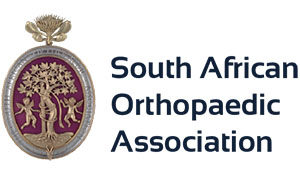
Knee pain, arthritis and knee replacement
The knee is a complex joint and is sometimes even referred to as an organ. The causes of knee pain are numerous and arriving at the correct diagnosis and treatment plan requires a careful history from you the patient, a thorough physical examination by the surgeon and special investigations such as x-rays, MRI or CT scan.
Common Knee Conditions
- Osteoarthritis
- Post traumatic Arthritis
- Avascular necrosis of the knee (AVN)
- Rheumatoid Arthritis
- Infection
- Septic Arthritis
- Osteomyelitis
- Anterior Cruciate Ligament Injury
- Meniscus Injury/tear
Just as the causes of knee pain are numerous, so too are the treatment options. These range from conservative measures such as physiotherapy and muscle strengthening, to minimally invasive techniques such as arthroscopy to treat problems within the joint. An arthroscopy uses a camera inserted through a key hole incision to access the knee joint to diagnose and treat pathology or injuries.
An osteotomy is indicated if your limb has underlying deformity which is causing increased stress or arthritis in a certain part of the joint. You may notice that your leg is “bow legged” or “knock knee”. An osteotomy involves cutting the bone around the joint and then realigning the bone to equalise the pressure within the joint.
A knee replacement or knee arthroplasty is done to treat damaged or worn cartilage in the knee. This can be due to various forms of arthritis, previous trauma or injury to the knee or avascular necrosis.
Symptoms which you may experience are pain around the knee, loss of function and/or ability to perform normal daily activities or hobbies/sports, instability and loss of range of motion.
Depending on how badly affected the knee is at the time of surgery, there remains the option of either doing a partial knee replacement where only the damaged portion of the knee is replaced, or a total knee replacement where all compartments are replaced. The postoperative rehabilitation is critical in knee replacements to ensure that good range of motion is achieved and the knee does not become stiff.
Knee arthroscopy and crucial ligament reconstruction
Knee arthroscopy and meniscus repair
Bilateral knee osteoarthritis
The previous x-rays demonstrate the pre- and postoperative x-rays of a patient with severe bilateral knee osteoarthritis. The patient presented with severe pain, loss of function and deformity. In this specific case, the right knee is turned inward or “knock knee” and the left knee is turned outward or “bow legged”, resulting in what is described as a “windswept deformity”.
The patient was treated with bilateral staged total knee arthroplasty (replacement). The postoperative x-rays demonstrate the powerful ability of a total knee arthroplasty to correct even severe deformity and restore alignment.
The patient achieved relief of pain and restoration of independent function.





